Hi Everyone,
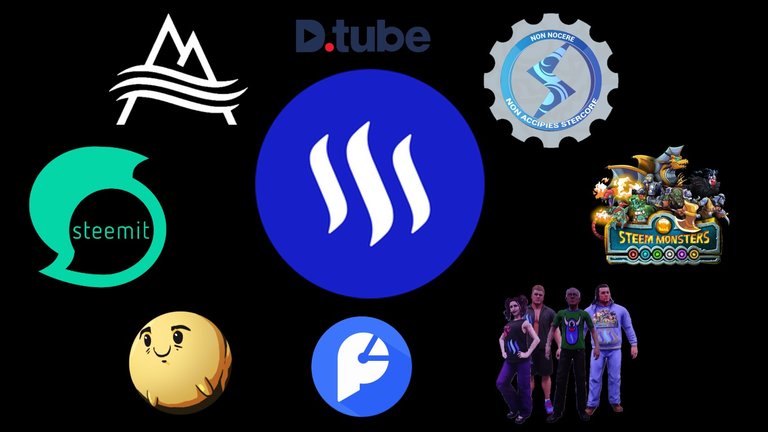
In this post, I have included the write-ups for each unit/lecture for my upcoming Steem Ecosystem Udemy course. I have broken the course into 5 Sections plus an extras section which I will update with latest developments. Altogether, I will be including 56 lectures/units for the initial release. I should have over 12 hours of video content. The course will also contain pdfs of all the slides included in the videos and 56 Multiple Choice Questions. The course is also free-of-charge; I think this is important, if we are attempting to on-board as many users as possible.
I felt a new comprehensive Steem course was needed considering the extent of development that has taken place on Steem in 2019. It can be very difficult for someone new or even an existing user to Steem to understand how everything functions. I expect 2020 to bring many more developments. The constant changes and improvements creates quite a difficult and steep learning curve for users. The course should help bring a new user’s and even an existing user’s knowledge to a higher level more easily. I have also included some advice and some of the things I have learnt on my Steem journey as well.
I think releasing a New Steem course now is good timing with the upcoming Smart Media Tokens (SMTs) and Communities and current low price. Steem is desperately in need of attention. One of the best times to promote is just prior to a major release. For Steem, it is two major releases. This course will initially contain just a short video describing information about SMTs and Communities based on SteemFest 4 presentations. Once both SMTs and Communities have been released to the broader Steem Ecosystem, the course will be updated to include as much information as I can find about them.
Course Information
Section 1 – Getting Started

Students will be able to create an account on the Steem blockchain. Students will know how to buy and sell Steem. Students will know where and how to obtain more information about the Steem Ecosystem.
Unit 1 - Course Outline
This unit introduces the ‘Guide to the Steem Ecosystem’ course. The unit briefly describes the five sections of the course. This unit also explains the course instructor’s intentions and background as well as why he believes such a course is important.
Unit 2 - What is the Steem Ecosystem?
This unit briefly explains the Steem Ecosystem from the perspective of the course instructor.
Unit 3 - What is the blockchain?
This unit explains what a blockchain is as well as describes the blockchain in the context of Steem. The unit explains several benefits of the blockchain as well as why many applications, social media in particular, are a natural fit to blockchain technology.
Unit 4 - How to find out more about Steem
This unit explains how a user can find out more about Steem. This unit is very important, as the Steem Ecosystem is constantly growing and changing. A user needs to know where to get the latest information.
Unit 5 - How to sign up
This unit explains the many options available to sign up to Steem. A user can obtain a free account from Steemit but will need to wait. A user can obtain an account immediately but will need to pay a small fee. A user can also get a free account from an existing user.
Unit 6 - Buying and selling Steem
This unit explains how to buy and sell Steem. The unit explains the importance of signing up to an exchange to obtain cryptocurrency. The unit explains how to add bank accounts to an exchange in order to transfer money to the exchange. The unit also explains how to use Blocktrades to buy Steem using cryptocurrency. The unit also explains how to sell Steem and return your earnings back to your bank account.
Unit 7 - Rules of Conduct
This unit explains the Steemit Terms of Services as well as some of the other rules applied by some of the applications and tribes. The Steem blockchain itself does not have a code of conduct but some of the user interfaces have some rules. This unit covers a few examples of these rules. The unit also discusses community action and the role of everyday users when it comes to fighting abuse in the ecosystem.
Section 2 – Navigating Steem Frontends

Students will be able to navigate Steem frontends Steemit, Busy, and SteemPeak. Students will also know how to navigate Steemit Wallet and its various functions.
Unit 8 - About Steemit (Part 1)
This unit begins Section 2 of the course. This unit describes and explains how to navigate the steemit.com website. The unit focuses mostly on the user’s channel/page.
Unit 9 - About Steemit (Part 2)
This unit is a continuation of the previous unit. This unit explores the rest of the steemit.com website beyond just the user’s home page. Pages such as the trending, hot, and promoted are explained. The unit also briefly discusses advertising on Steemit.
Unit 10 - About Busy
This unit explores busy.org. This is an alternative user interface for the Steem blockchain. It is similar to steemit.com but has a slightly different feel to it, which some users might prefer.
Unit 11 - Steemit Wallet (Part 1)
This unit looks at Steemit Wallet. Steemit Wallet is the website where users engage with their wallet. The website allows transactions, powering up or down, delegating Steem Power, change passwords and even change profile settings. This video explains how these actions can be done using this website.
Unit 12 - Steemit Wallet (Part 2)
This unit continues exploring Steemit Wallet. This unit looks at curation rewards and author rewards displayed on the website. The unit also looks at the dropdown options available at various parts of the balance page. These dropdowns enable users to access some important functions. The unit finishes up with a quick look at the internal market for Steem and SBD, which can be accessed from Steemit Wallet.
Unit 13 - Steem Plus
This unit explains and describes the additional functionality Steem Plus provides Steemit. The video covers features such as additional links, additional user information, and how to acquire Steem Plus Points (SPP).
Unit 14 - SteemPeak
This unit introduces the course student to SteemPeak. This unit covers the broader features of SteemPeak such as explore and favourites. SteemPeak is also the gateway to many of the Steem Engine Tribes.
Unit 15 - SteemPeak Profile (Part 1)
This unit explains and describes the options available on the user’s SteemPeak profile page. SteemPeak has many unique features not available on many of the other Steem user interfaces. These features include tools, lists, and unique settings functions.
Unit 16 - SteemPeak Profile (Part 2)
This unit continues with the exploration of the SteemPeak profile page. The unit focuses on aspects such as accessing the proposal page and information available about witnesses. This unit also completes Section 2 of the course.
Section 3 – Becoming a Steem User
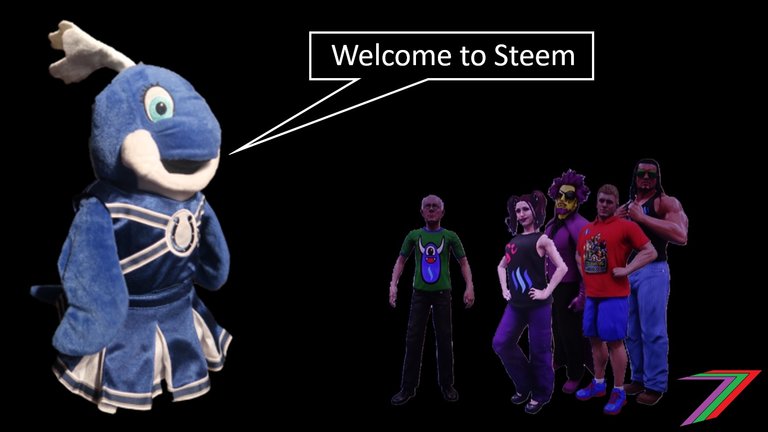
Students will learn how to post content on the frontends. Students will learn how to curate content. Students will learn how to earn as an investor.
Unit 17 - Types of Users
This unit begins Section 3 of the course. This unit looks at various types of users that the Steem Ecosystem is likely to attract. The unit explains briefly, what the ecosystem has to offer and provides a brief introduction to the rest of this section.
Unit 18 - How to Post (Part 1)
This unit explains how users can post content on Steem. This unit focuses on the SteemPeak user interface because of the large number of options available which other user interfaces currently do not have.
Unit 19 - How to Post (Part 2)
This unit continues from the previous unit by explaining how to post content on Steem. This unit explains how to post on both steemit.com and busy.org. The unit also explains some of the follow-up actions once a post has been submitted to the Steem blockchain. These actions include promotion and addressing user comments.
Unit 20 - Basic Markdown
This unit briefly explains Markdown and how it can be used to format content. The unit is not a comprehensive guide to Markdown. However, it should provide sufficient information for a new user to get started.
Unit 21 - How to get more engagement (Part 1)
This unit explains how a user can get more engagement for his or her content. Most of this unit is based on my personal experience and how I managed to gain a larger following on Steem. Different strategies will work differently with different people but this unit contains many good ideas that a new user could adopt.
Unit 22 - How to get more engagement (Part 2)
This unit continues from the previous unit. This unit focuses on utilising tribes and communities to gain more attention for content. The unit also discusses the use of bots. Several other courses encourage the use of bots. This course strongly discourages the use of bots and explains why in some detail. There is a unit later in the course that explains how bots can be used if that is a route a user wants to take.
Unit 23 - How to vote
This unit explains how a user can vote for content. The unit is explained using previously described user interfaces such as Steemit and SteemPeak. This unit also provides some additional technical information, which explains why different users have different vote values. The unit also explains why vote values vary depending on when a user upvotes a post.
Unit 24 - How to curate content
This unit explains how to curate content. This unit contains information based on my personal experience curating content since Hardfork 21/22. Curation is a great way to use Steem Power to earn rewards. However, these rewards vary depending on how and when a user curates content. The unit also explains that curating content is more than just trying to obtain the highest return per a vote.
Unit 25 - Investor (Part 1)
This unit begins a mini three part series regarding investing in Steem. The unit explains the different investment ranking based on number of vests held. The unit explains the difference from obtaining a return from changing Market Cap value and returns in Steem from holding Steem Power. The unit also looks at earning returns from delegating Steem Power to initiatives, DApps, and bots.
Unit 26 - Investor (Part 2)
This unit investigates curation from the perspective of the investor. The unit considers returns from curation in respect to inflation, Steem Power, interest on Steem Power, and inefficient use of Steem Power from other stakeholders. The unit also explains how it is possible to earn a return greater than the current inflation rate.
Unit 27 - Investor (Part 3)
This unit looks at what investors can do to influence the Market Cap and price of Steem. The unit focuses on supporting good witnesses, good projects, and giving Steem as much exposure as possible on other forms of social media.
Unit 28 - Witnesses
This unit explains the role of witnesses as well as why it is important to vote for good witnesses.
Section 4 – Behind the Scenes
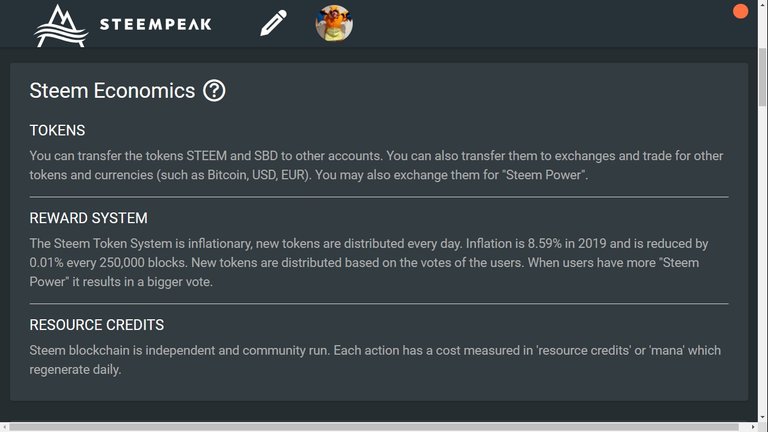
Students will learn how the Steem Ecosystem rewards activities on the blockchain. Students will learn about what is stored on the blockchain and what is stored with the Steem applications.
Unit 29 - Steem Economics (Part 1)
This unit begins Section 4 of the course. This unit introduces and explains Steem Economics. The course uses the three categories of tokens, reward system, and resource credits based on information found on SteemPeak. This unit focuses on the token and the information available about the token on various websites such as coinmarketcap.com, coingecko.com, and CCID.
Unit 30 - Steem Economics (Part 2)
This unit continues the exploration of Steem Economics. This unit focuses on the rewards system, which looks at steemd.com and steemdb.com. This unit also looks at resource credits. The unit explains the function of resource credits as well as where the user can obtain more information about them.
Unit 31 - Who pays you?
This unit explains how the Steem Ecosystem pays different contributors. The unit revisits the rewards pool and explains how the rewards pool is distributed to different groups of users such as content creators, curators, developers, witnesses, and holders of Steem Power.
Unit 32 - Steem, SBD, and Steem Power
This unit explains the differences between Steem, SBD, and Steem Power. The unit also explains their functions and why someone might be inclined to hold one over another.
Unit 33 - What’s on the blockchain?
This unit explains which interactions and content is stored on the blockchain and which remain with the user interface or DApp.
Unit 34 - Economic Improvement Proposal
This unit explains the Economic Improvement Proposal (EIP). The three key changes of the EIP are explained as well as their desired effect. These changes are increasing curation rewards from 25% to 50% of post payouts, a separate downvote mana pool, and a new convergent linear rewards curve.
Section 5 – The Wonders of the Steem Ecosystem
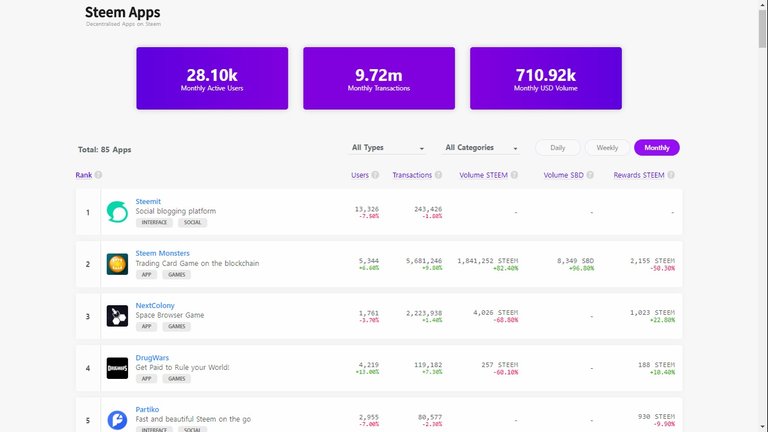
Students will learn about some of the many applications on the blockchain. Students will learn how to use tools to enhance their experience. Students will learn about tribes and tokens.
Unit 35 - Steem password and key management (Part 1)
This unit begins Section 5 of the course. This unit explains key and password management. The unit describes Steem Connect and how it is used to access to access various DApps. The unit explains how to navigate Steem Connect to access more features.
Unit 36 - Steem password and key management (Part 2)
This unit continues with key management. This unit takes a closer look at Keychain. The unit explains how Keychain can provide easy access to DApps and features that require the use of keys.
Unit 37 - Steem DApps
This unit introduces Steem DApps. The unit focuses on websites such as state of the Dapps, Dapp.com, Steem Apps. These websites offer access to the wide variety of applications using the Steem blockchain. These websites also rank and compare Steem DApps with DApps from other blockchains.
Unit 38 - Steem DApps – Steem Monsters
This unit takes a quick peep at a very popular DApp on the Steem blockchain. This DApps is Steem Monsters. Steem Monsters is a digital card game that utilises the blockchain to provide users with a fun gaming experience as well an opportunity to own Steem Monster cards, which can be considered an investment.
Unit 39 - Steem DApps – SteemHunt
This unit also explores a very popular DApp on the Steem blockchain. This DApp is SteemHunt. SteemHunt is a DApp that encourages users to write about and describe products. The DApp has a unique user interface, which provides users with a different experience than most other applications.
Unit 40 - Steem DApps - Actifit
This unit describes and explains the mobile fitness DApp Actifit. Actifit offers users an opportunity to be rewarded for physical activity. This activity can be recorded with the DApp itself or with a FitBit. The FitBit transfers data to Actifit. Actifit also rewards users in AFIT tokens (Steem Engine Token).
Unit 41 - Steem DApps - Partiko
This unit looks at the mobile Steem interface Partiko. Partiko enables users to use and explore the Steem Ecosystem from the ease of their mobile phone. The unit explains the various functions of Partiko as well as how users can earn Partiko Points, which can be used to obtain upvotes. The unit also briefly mentions eSteem, which is another interface that enables access to Steem from mobile phones.
Unit 42 - Steem DApps – 3Speak
This unit explores the 3Speak video platform. 3Speak offers video creators that have faced censorship on other video platforms such as YouTube a place to gain exposure and earn rewards. 3Speak also has a strong cryptocurrency emphasis. The unit explains how users can navigate the 3Speak website and explains some of its unique features.
Unit 43 - Steem DApps – DTube
This unit continues exploring video platforms on the Steem blockchain. In this unit, Dtube is explored. The video explains some of the interesting features DTube offers as well as explains some of the differences to 3Speak. The unit ends by very briefly introducing several other DApps such as DLike, SteemPress, Appics, SteemStem, DPoll, Tasteem, DSound, Musing, and Engrave
Unit 44 - Steem tools accessed from steemit.com
This unit revisits the Steem Plus version of Steemit to explore some of the links to various tools. The unit briefly explains each tool and how it can be used.
Unit 45 - Steem Tools - MinnowBooster
This unit explores the Minnow Booster website. The unit explains some of the features on Minnow Booster such as delegation, the delegation market and vote selling.
Unit 46 - Steem Tools – The list continues
This unit explores a variety of tools available. These tools included Usesteem, Steem Projects, SteemitBoard Rankings, SmartSteem, Operation Curation Bot, LikWid, GitHub, and information offered by accounts that provide frequent in-depth analysis of the Steem Ecosystem.
Unit 47 - Steem Tools – Steem World
This unit takes a closer look at the tool Steem World. The unit looks at all the types of information available on Steem World. The unit explains how the information is relevant to the user. Steem World contains almost every bit of information publicly available about any accounts activity and interaction with the Steem blockchain.
Unit 48 - Steem Tools – Steem Reports
This unit takes a closer look at Steem Reports. The unit explains the types of information available on this website. Steem Reports provides a broad overview of account activity ranging from voting patterns to witness delegation.
Unit 49 - Curation trails and autovoting
This unit explains autovoting and curation trails. The unit focuses on the website SteemAuto. The unit explains how to navigate SteemAuto as well as the features available on the website. The unit explains how to follow trails and support your favourite content creators as their posts are released.
Unit 50 - Off-chain communication
This unit explains the difference between off-chain and on-chain communication. The unit explains the various types of off-chain communication such as steem.chat and Discord.
Unit 51 - Steem Engine Tokens
This unit explains Steem Engine Tokens as well as the Steem Engine website. The unit explains how to transfer Steem to Steem Engine and how to buy and sell Steem Engine Tokens. The unit explains the Steem Engine Sidechain and how to access information stored on the sidechain. The unit briefly explains how to create Steem Engine Tokens. The unit also explains the link between the tokens and tribes.
Unit 52 - Steem Engine Tribes
This unit explores Steem Engine Tribes. The unit explains how to access tribes using SteemPeak. The unit also looks at Palnet as an example of a tribe. The unit explains how the Palnet website operates. The unit explains some of the features available on this website. The unit also explains how to access information regarding voting power for each tribe and the relationship tribes have with Steem Engine.
Unit 53 - Bots
This unit looks at bots and bid-bots in particular. The unit explains SteemBot Tracker and the functions it offers. The unit explains how to buy votes and how to use information on SteemBot Tracker to select a bot and time votes. The unit also explores how a user can delegate to a bot. The unit also briefly describes the website isteemd, which provides more information about bots. The unit also emphasizes the risks involved in buying votes from bots.
Unit 54 - Financial Services
This unit looks at some of the financial services offered by organisations operating on the Steem blockchain. Services such as Fundition, Steem Basic Income, Steem Gigs, and Steem Ninja are discussed. The unit describes how these services can be used as additional forms of revenue as well as offer unique services.
Unit 55 - Summary
This unit summarises the key points from all sections and units. This unit rounds out the main body of the course and thanks students for their participation.
Section 6 - Additional Content
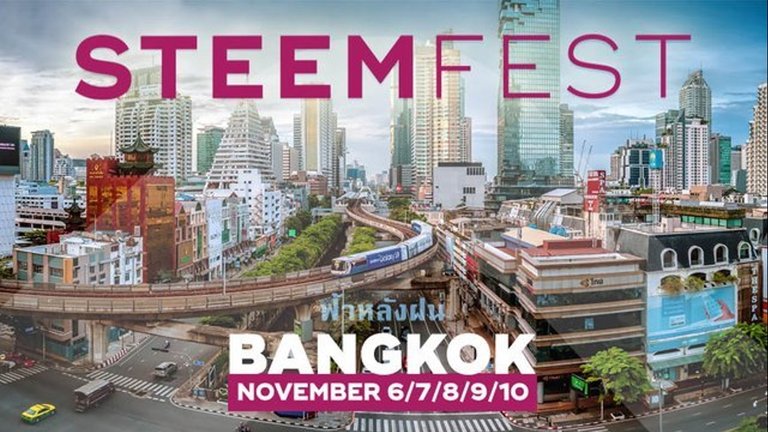
Students will learn about new developments relating to Steem.
Unit 56 - SteemFest 4 Information – Smart Media Tokens and Communities
This unit offers some insight into Smart Media Tokens and Communities based on information provided at SteemFest 4. This unit also contains links to all the video presentations from SteemFest 4.
That’s what I have so far. I am likely to update some of these descriptions, as I get closer to completion. I am currently running ahead of my initial timeline. I initially planned to have the course up and ready before Christmas (mid-to-late December). I think I should have it up by early December if there are no delays.
More posts
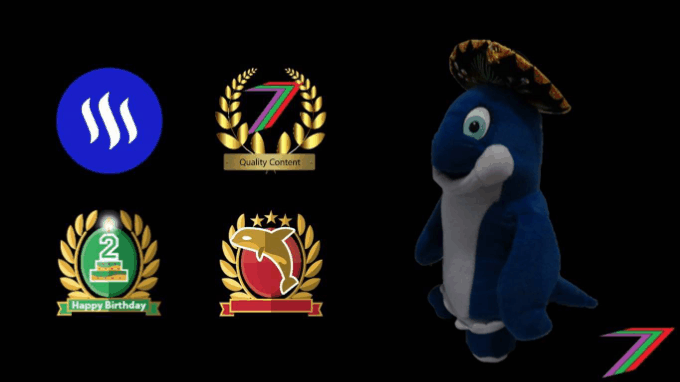
If you want to read any of my other posts, you can click on the links below. These links will lead you to posts containing my collection of works. These posts will be updated frequently.
Economics Udemy Course
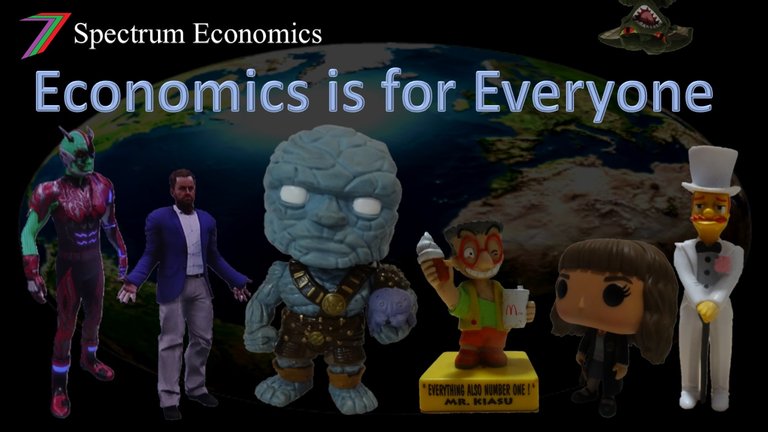
I have launched my first Udemy course ‘Economics is for Everyone’. The course focuses on how economics affects everyday people, the decisions they make and how they interact with the world around them. The course contains 24 video lectures (about 4 hours of viewing), 64 multiple-choice questions (3 at the end of most lectures), 32 downloadable resources (presentation slides, additional notes and links to relevant Steem posts), and 2 scenario questions. The course is currently free-of-charge. Click the link above to access the course.




Steem - The Future of DApps
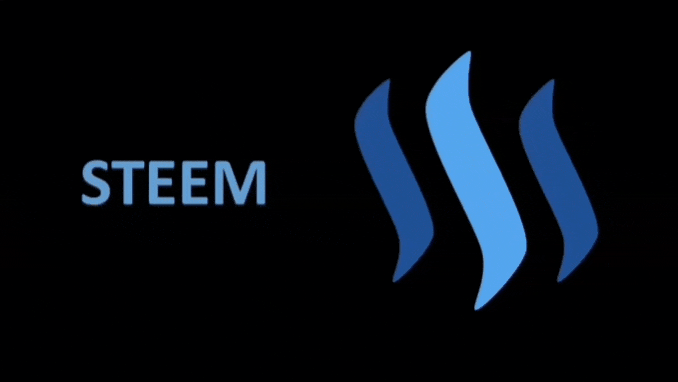



Dear @spectrumecons
Great read. Upvoted already,
I wish post on steemit wouldn't be considered "to old to read" once they are over 7 days old. Your publication could be surely very useful for most new users.
Amount of work and time you invested into all those lessons must be insane. RESPECT.
Yours, Piotr
Once the course has been published, I will include a link at the end of my posts so that any of my readers can easily access it.
I have put in quite a few hours so far but I believe it will be worth it. With so many developments, I think we will have a much better new user retention rate than what we previously had.
This is so far the best STEEM tutorial I have seen. Excellent job!
You have to https://steemproposals.com or similar SPS front end and try to get funding from the community. You deserve the support from the community for the hard work. Give it a try.
Thanks @vimukthi. I thought about Steem Proposals initially. I decided against it considering the low price of Steem and the many other initiatives that need funding. I also have the option of posting some of the course videos on Steem to get some rewards.
The SPS Fund actually has 145,539.860 SBD. You don't have to worry too much about that :-)
wow!!!
I'll try to make it 'wow' when it's released.
That seems awesome! And being free-of-charge makes it even more accessible to anyone who wants to try out this new thing they might have heard about called Steem.
I am hoping it can draw more attention as it will be free.
Wonderful article that explains very well the universe of Steem, and reading it, I found very interesting things that I didn't even know. Thank you so much for the many information given. See you soon.
Posted using Partiko Android
I'm glad you found it useful. The course will go into a lot more detail.
Just shared it on my twitter account.
Excellent work. I can imagine the amount of hours you have put in to put this together.
It has taken up quite a bit of time. If it can get some attention it will be worth it.
Not enough units...needs more units..
Just kidding..looks like a good outline !!
It's surprising how much there is to know when it's all pulled together.
It's surprising how
Much there is to know when it's
All pulled together.
- spectrumecons
I'm a bot. I detect haiku.
Consider making a 2 pager as the intro - TLDR for folks who want to know the super basics to start off with.
May I ask for how long have you been working on it?
Awesome work man!
Just over a month but the searching for information was made much easier since I've been here over 2 years and I have been making an effort to learn more the whole time as well.
I appreciate the effort as I know you have knowledge to back It up.
Will share among my colleagues 😊
May I ask for how
Long have you been working on
It? Awesome work man!
- ocupation
I'm a bot. I detect haiku.
@tipu curate
Thanks.
This looks great. I will resteem in a day or so (right now I just resteemed another blog that really deserves attention). Information I can certainly use, and so can many people on the platform, I think.
Thanks for making it free.
No problem. I think it needed to be free to get more attention.
No problem. I think
It needed to be free to
Get more attention.
- spectrumecons
I'm a bot. I detect haiku.
Awesome content...resteeming as we speak.
That's great. Thanks for your support.
Excellent work. Perfect guide.
Thanks @mindtrap. I want to be able to offer enough to convince people to join Steem.
And you are doing it just fine!!
Mate. You're a legend! Thank-you for doing this.
Hey, no problem. I felt it needed to be done.
You did great job here!
Thanks.
!BEER
for youGreat job @spectrumecons.
Cool, thanks.
Great work!
Thanks @stealthtrader.
Your post has been curated by the bitcoin myk project. Tokens are available for this account you can trade for steem at: https://steem-engine.com/. Join our curation priority list to earn more tokens by registering at:
http://www.bitcoinmyk.com/register/
Visit our discord at: https://discordapp.com/channels/523971711733858364/523971711733858366
Bitcoin MYK
admin
Register - Bitcoin MYK
This post earned 100 BTCMYK
That's awesome, thanks.
View or trade
BEER.BEERHey @spectrumecons, here is a little bit of from @eii for you. Enjoy it!Hi @spectrumecons!
Your UA account score is currently 4.804 which ranks you at #1453 across all Steem accounts.
Your rank has not changed in the last three days.Your post was upvoted by @steem-ua, new Steem dApp, using UserAuthority for algorithmic post curation!
In our last Algorithmic Curation Round, consisting of 95 contributions, your post is ranked at #20.
Evaluation of your UA score:
Feel free to join our @steem-ua Discord server
Hi, @spectrumecons!
You just got a 0.98% upvote from SteemPlus!
To get higher upvotes, earn more SteemPlus Points (SPP). On your Steemit wallet, check your SPP balance and click on "How to earn SPP?" to find out all the ways to earn.
If you're not using SteemPlus yet, please check our last posts in here to see the many ways in which SteemPlus can improve your Steem experience on Steemit and Busy.
Great post... thanks for information
Posted using Partiko iOS
No problem